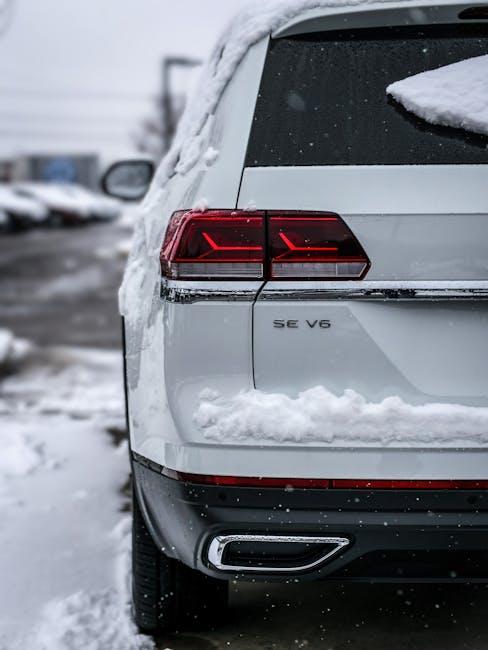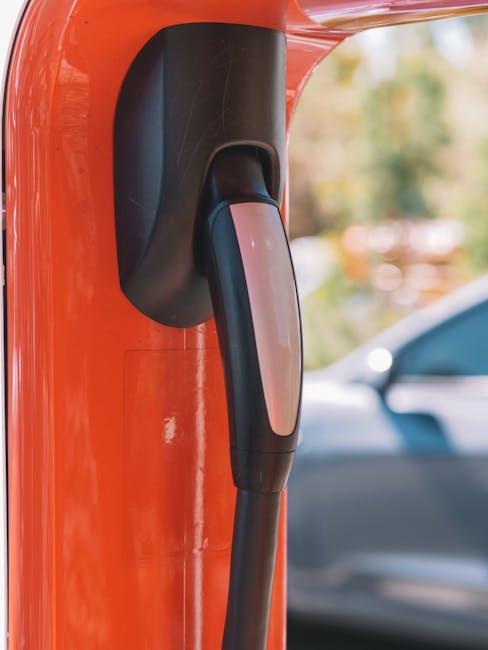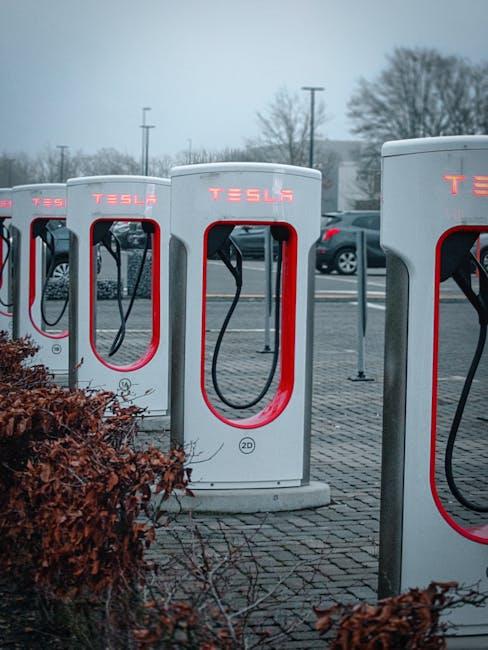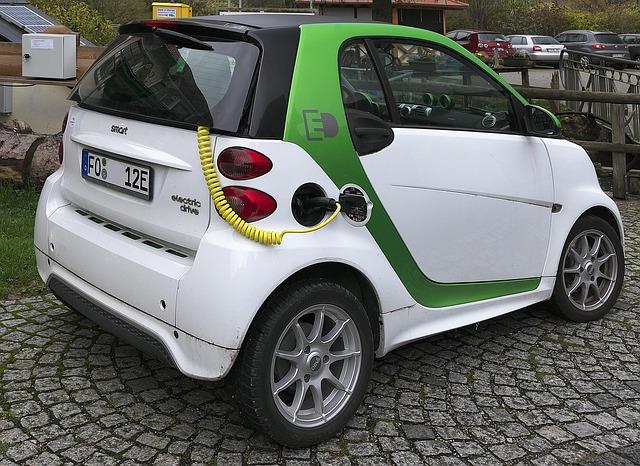As winter tightens its icy grip, many drivers find themselves stranded with a stubbornly silent car battery. The cold months challenge even the most reliable batteries, turning simple starts into frustrating rituals. Understanding how to care for your car battery during winter isn’t just a convenience—it’s a necessity. In this article, we’ll explore practical and effective winter car battery maintenance tips to keep your vehicle ready to go, no matter how low the temperature drops. Whether you’re a seasoned driver or a winter newcomer, these insights will help you face the season with confidence and reliability.
Table of Contents
- Preparing Your Battery for Cold Weather Challenges
- Recognizing Early Signs of Battery Trouble in Winter
- Effective Cleaning and Inspection Techniques for Optimal Performance
- Smart Charging Habits to Extend Battery Life
- Choosing the Right Battery and Accessories for Winter
- Practical Emergency Tips to Avoid Winter Battery Failures
- Q&A
- Key Takeaways

Preparing Your Battery for Cold Weather Challenges
As temperatures drop, your car’s battery faces increased strain, making it essential to take proactive steps to ensure it’s up to the challenge. Start by thoroughly inspecting the battery terminals for corrosion. Clean terminals guarantee a solid connection, which is crucial for efficient power delivery during cold starts. Additionally, check the battery’s age; typically, batteries older than three years may struggle more in chilly weather and might need an early replacement to prevent being stranded.
Maintaining optimal battery health involves a few key practices you can easily incorporate into your routine:
- Keep the battery fully charged: Cold weather drains battery power faster, so regular charging helps maintain performance.
- Use an insulated battery blanket: This helps retain heat and reduces the risk of freezing.
- Limit short trips: Frequent short drives don’t provide enough time for a full recharge.
- Park in a garage when possible: Shielding the battery from freezing temps enhances longevity.
| Battery Aspect | Recommended Action |
|---|---|
| Age | Replace after 3-4 years |
| Terminal Condition | Clean with baking soda solution |
| Charging | Use a trickle charger if parked long-term |
| Insulation | Install battery blanket |

Recognizing Early Signs of Battery Trouble in Winter
Winter’s chill can quickly expose hidden weaknesses in your car battery, often catching drivers off guard. One telltale sign is a slower engine crank; if your vehicle hesitates or struggles to start, it’s time to take notice. Another early indicator is dimmer headlights when the engine is idling, as a struggling battery cannot provide consistent power. Keep an eye out for warning lights on the dashboard, especially the battery or charging system icon—these alerts often signal that your battery’s performance is deteriorating under the cold stress.
Recognizing subtle symptoms early can save you from inconvenient breakdowns or costly replacements. Here are some signs to watch for:
- Frequent jump-starts: Regular need for a jump may mean your battery cannot hold a charge.
- Unusual electrical issues: Flickering interior lights or weak power to accessories.
- Corroded terminals: Build-up at the battery posts can reduce efficiency significantly.
| Symptom | Potential Cause | Action |
|---|---|---|
| Slow Cranking | Weak charge in cold weather | Test and recharge battery |
| Dashboard Battery Warning | Charging system issue | Check alternator and battery |
| Electrical Malfunction | Battery or wiring problem | Inspect and repair as needed |

Effective Cleaning and Inspection Techniques for Optimal Performance
Regular cleaning of your car battery terminals is essential to prevent corrosion buildup that can restrict electrical flow. Use a mixture of baking soda and water to gently scrub the terminals with a soft brush, making sure to wear gloves to protect your skin. After cleaning, apply a thin layer of petroleum jelly or a specialized terminal protector spray to inhibit future corrosion. While cleaning, inspect the battery case for any cracks or bulges, as these are signs of damage that may necessitate replacement. Maintaining clean and damage-free terminals ensures efficient current transfer, which is vital during cold starts.
In addition to manual cleaning, conduct a thorough inspection using simple tools like a multimeter to measure the battery’s voltage and overall health. Be mindful of the following key indicators:
- Voltage below 12.4V: The battery may be undercharged or failing.
- Signs of fluid leakage: Indicates internal damage to the battery.
- Loose or frayed cables: Can cause weak connections impacting performance.
| Inspection Item | Optimal Condition | Action Needed |
|---|---|---|
| Terminal Cleanliness | Corrosion-free | Clean and apply protector |
| Battery Voltage | 12.6V or higher | Recharge or test further |
| Cable Tightness | Firm and secure | Tighten or replace |

Smart Charging Habits to Extend Battery Life
Maintaining optimal charging practices can significantly prolong the lifespan of your car battery, especially during the cold winter months. Avoid leaving your car plugged into a charger once it reaches full capacity to prevent overcharging, which can cause excessive heat and degrade battery cells. Instead, aim to charge the battery when it drops to around 20-30% capacity and unplug once it’s fully charged. This practice helps maintain the battery’s chemical balance and reduces the risk of capacity loss.
Additionally, using a smart charger can optimize the charging process by automatically adjusting the current based on the battery’s needs, ensuring efficient energy use without stress on the battery. Cultivating the habit of shorter, frequent charges rather than long, infrequent ones can be particularly beneficial in cold weather, as it lessens the strain caused by low temperatures. Here’s a quick guide to smart charging timelines:
| Battery Level | Recommended Charging Time | Charging Type |
|---|---|---|
| 20-30% | 1-2 hours | Slow/Maintenance |
| 30-80% | 2-4 hours | Standard |
| 80-100% | 30-60 minutes | Trickle/Float |

Choosing the Right Battery and Accessories for Winter
Selecting a battery designed specifically for cold weather is crucial to ensure reliable performance during winter months. Look for batteries with a high Cold Cranking Amps (CCA) rating, which measures the battery’s ability to start an engine in freezing conditions. Additionally, opting for maintenance-free batteries with sealed designs can help prevent acid leaks and corrosion that are more common in harsh weather. When shopping for winter accessories, consider investing in battery warmers or thermal blankets—these help maintain optimal battery temperature, reducing the risk of power loss during sudden temperature drops.
Enhancing your winter readiness means pairing the right battery with accessories that complement cold-weather resilience. Here’s a quick look at key features to prioritize:
- Cold Cranking Amps (CCA): Higher CCA offers better startup power.
- Reserve Capacity: Longer backup time for electrical components.
- Thermal Protection: Battery blankets and warmers to maintain heat.
- Corrosion Resistance: Sealed batteries minimize acid leaks.
| Accessory | Benefit | Winter Use |
|---|---|---|
| Battery Warmer | Keeps battery warm | Essential for extreme cold |
| Thermal Blanket | Insulates battery | Good for moderate cold |
| Heavy-Duty Charger | Maintains charge | Prevents battery drain |

Practical Emergency Tips to Avoid Winter Battery Failures
When temperatures plummet, your car battery becomes especially vulnerable. To reduce the risk of being stranded in the cold, always keep a set of jumper cables and a portable jump starter in your trunk. These tools can quickly revive a weak battery without waiting for roadside assistance. Additionally, consider carrying a small thermal blanket for the battery—just wrapping it during freezing nights helps maintain warmth and battery efficiency.
Knowing how to recognize early warning signs can save you from frustrating delays. If your engine cranks slowly or your dashboard lights dim when you start the car, it’s time to act. Here are a few immediate steps to follow:
- Turn off unnecessary electronics: Reduce power drain by switching off radios, heaters, and headlights before attempting to restart.
- Keep the battery warm: Park your car in a garage or use insulating battery covers to retain heat.
- Ensure clean connections: Regularly check and clean battery terminals to prevent corrosion that hinders current flow.
| Symptom | Quick Fix |
|---|---|
| Slow engine crank | Use jumper cables or jump starter |
| Dashboard lights flicker | Turn off electronics, clean terminals |
| Car doesn’t start at all | Warm the battery with thermal blanket |
Q&A
Q&A: Winter Car Battery Maintenance Tips
Q1: Why is winter particularly challenging for car batteries?
A1: Winter poses a double whammy for car batteries. Cold temperatures slow down the chemical reactions inside the battery, reducing its ability to hold a charge. Meanwhile, using heaters, defrosters, and headlights more often increases the electrical load, draining the battery faster. Together, these factors make batteries more prone to failure when you need them most.
Q2: How can I check if my car battery is winter-ready?
A2: Start with a visual inspection—look for corrosion on terminals, cracks in the casing, or loose connections. Next, test the battery’s voltage with a multimeter; a healthy, fully charged battery should read about 12.6 volts. For a more thorough check, many auto shops offer battery load tests that simulate cold-weather conditions.
Q3: What steps can I take to improve my battery’s performance during winter?
A3: Keep your battery and terminals clean and tight. Remove any corrosion using a baking soda and water mixture, then apply petroleum jelly to prevent future buildup. If possible, park your car in a garage to shield it from extreme cold. Also, turn off all electrical accessories before shutting down to avoid excessive drain.
Q4: Are battery warmers a good investment for winter?
A4: Battery warmers can be a smart choice if you live in frigid climates. They wrap around the battery and gently heat it, maintaining optimal temperature for chemical reactions. This helps the battery retain charge and improves starting power on chilly mornings.
Q5: How often should I replace my car battery?
A5: Most car batteries last between three to five years. If your battery is getting close to this age or shows signs of weakness—such as slow engine cranking or frequent jump-starts—it’s wise to replace it before winter hits to avoid unexpected breakdowns.
Q6: What should I do if my battery dies on a cold winter day?
A6: Stay safe first: ensure your car is in a secure location. Use jumper cables and another vehicle or a portable jump starter to revive your battery. After starting, let your car run for at least 20 minutes to recharge the battery. If problems persist, have your battery and charging system checked by a professional.
Q7: Can cold weather damage a healthy battery?
A7: While cold weather stresses the battery, a healthy, fully charged battery can generally withstand winter’s chill. Problems occur when batteries are old, weak, or undercharged, which can cause the electrolyte to freeze and damage cells. Regular maintenance minimizes this risk.
Q8: Is there any special battery fluid I should use during winter?
A8: Most modern car batteries are maintenance-free and sealed, so you don’t add fluid. For batteries that require topping off, use distilled water only. Avoid tap water, as minerals can harm the battery. Check your owner’s manual for specific instructions.
Maintaining your car battery through the cold months doesn’t have to be a daunting task. A little care and awareness can keep your vehicle starting smoothly, no matter how frosty the forecast.
Key Takeaways
As winter’s chill sets in and roads grow slippery, your car battery becomes the unsung hero of every journey. By embracing these simple maintenance tips, you can ensure it remains strong and reliable, no matter how frosty the days ahead. After all, a well-cared-for battery is more than just power—it’s peace of mind wrapped up in a cold-weather promise. So this winter, give your battery the attention it deserves, and let every start be a smooth one.


2 Comments
q28ru6
q28ru6